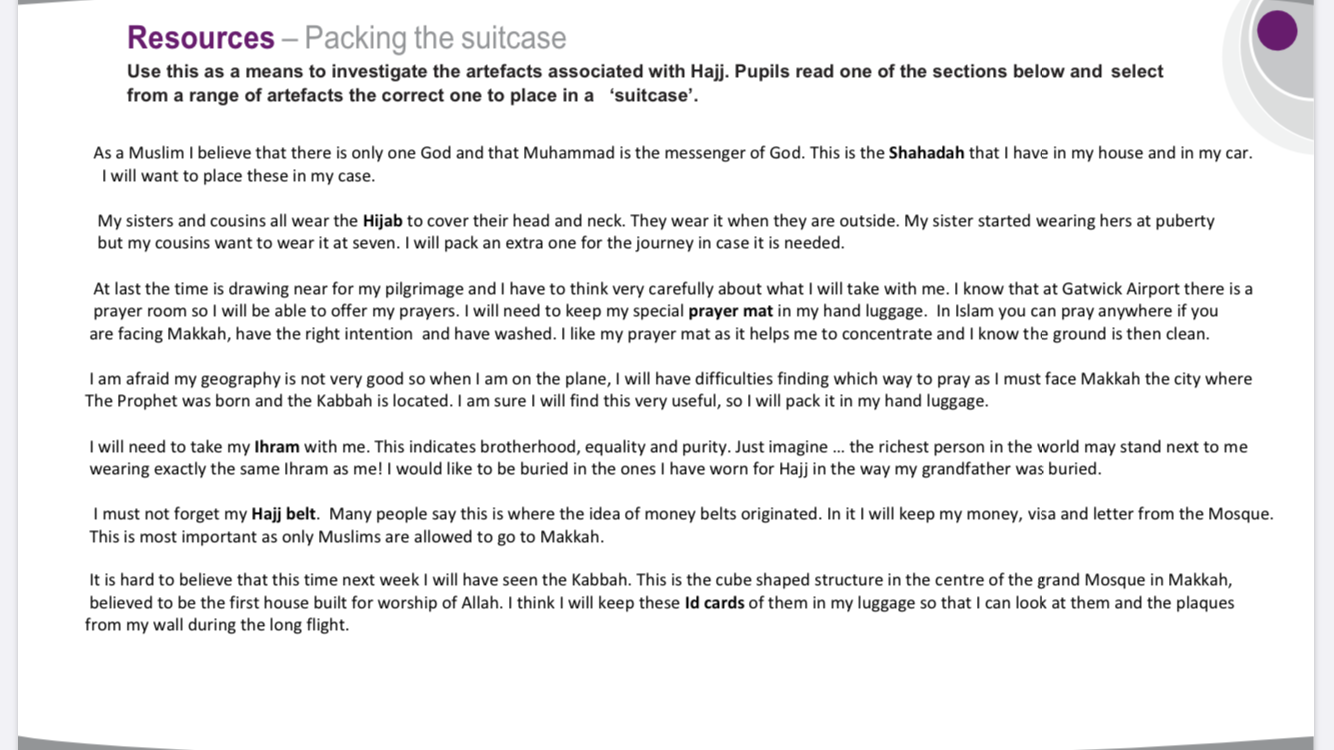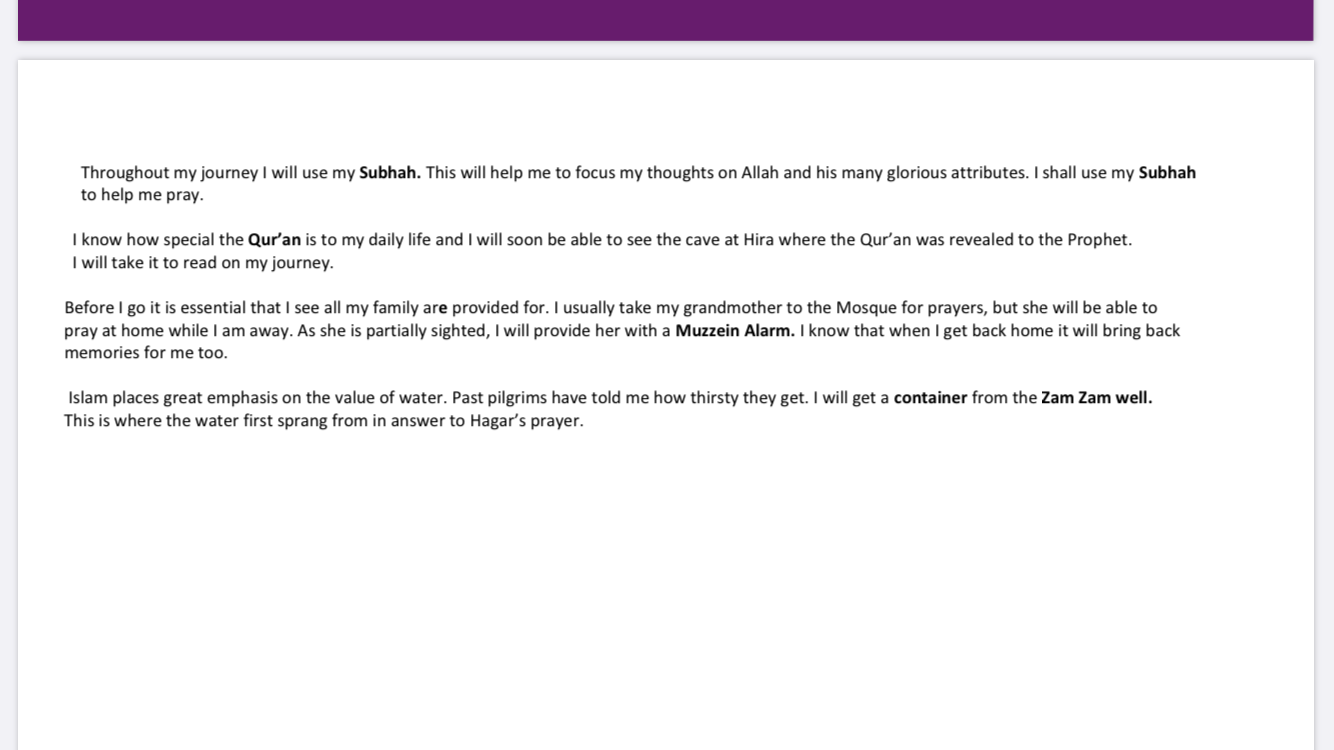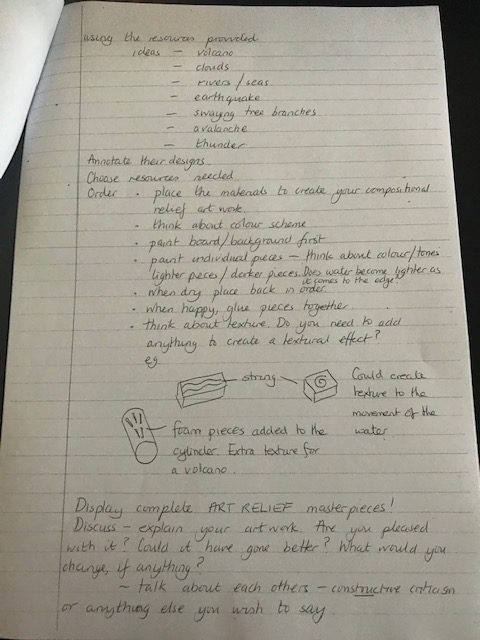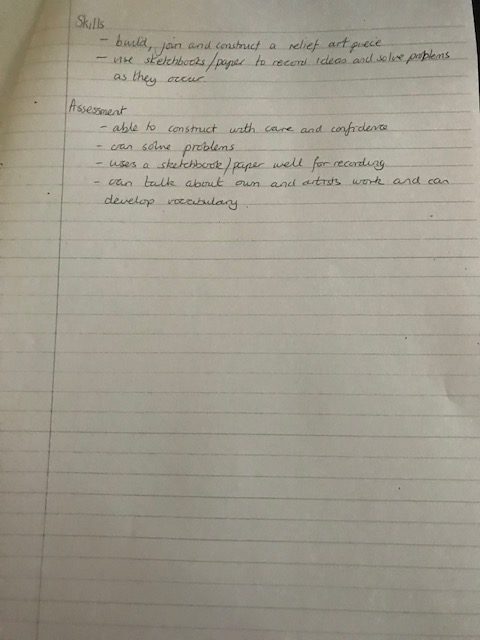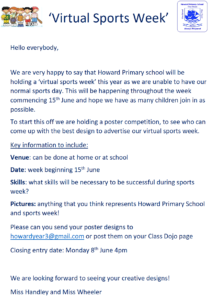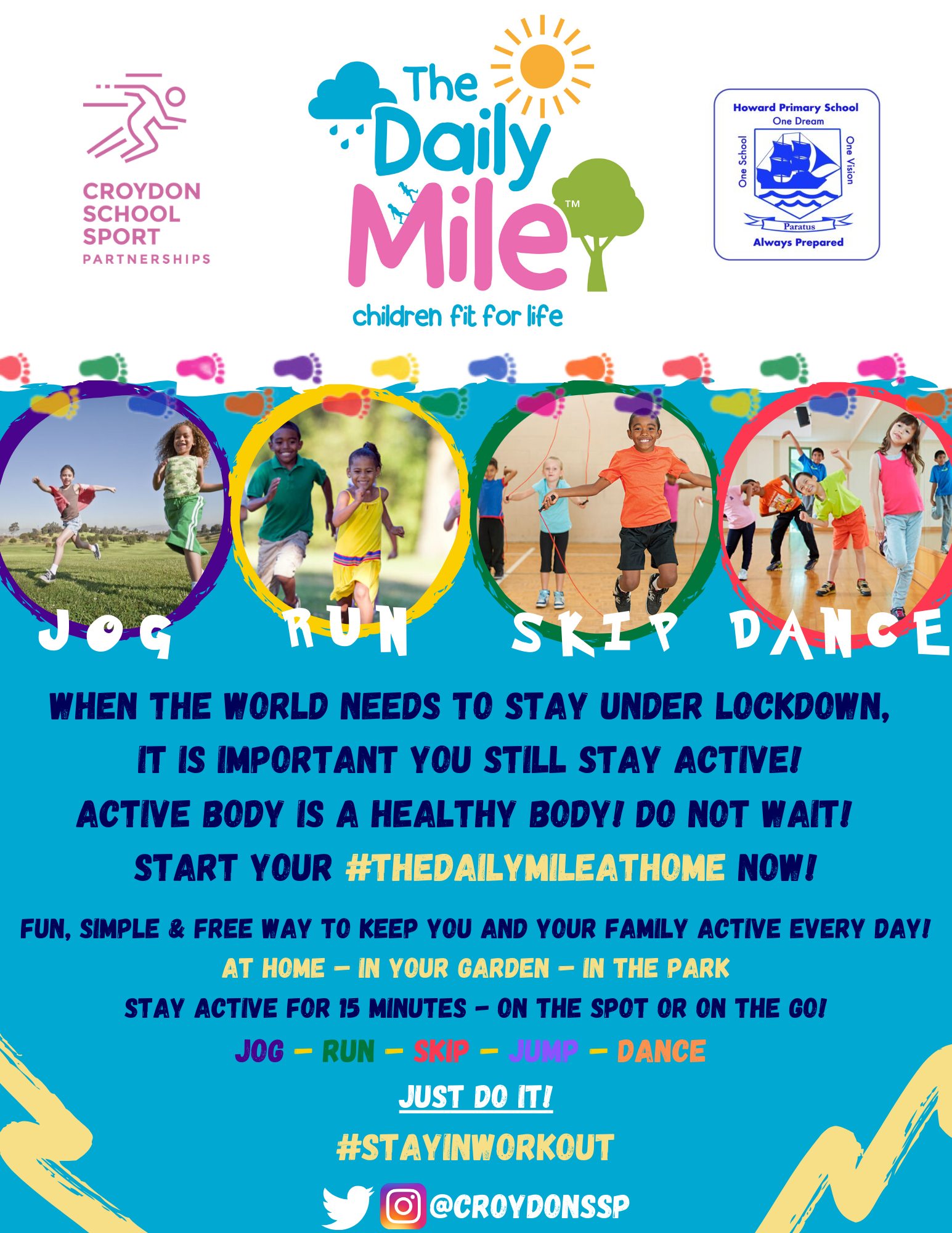Welcome to Queen Elizabeth 2 Class

Welcome all Year 6 parents and pupils.
Class Teacher: Miss Blackford
Teaching assistants: Mrs Jackson & Mr Cellmer
Recommended reading books for Year 6:
Best Books for Year 6 | Ages 10-11 Recommended Reads | BooksForTopics
Expertly selected books for 9 and 10 year old children (lovereading4kids.co.uk)
Expertly selected books for 11, 12 and 13 year old children (lovereading4kids.co.uk)
[dropshadowbox align=”none” effect=”lifted-both” width=”auto” height=”” background_color=”#ffaee7″ border_width=”5″ border_color=”#000000″ ]Year 6 leavers[/dropshadowbox]
[dropshadowbox align=”none” effect=”lifted-both” width=”auto” height=”” background_color=”#42fb62″ border_width=”5″ border_color=”#000000″ ]Bitmoji class photos[/dropshadowbox]


Maths
Lesson 1 Vertically opposite angles 2020
Lesson 2 Angles in a triangle 2020
Lesson 3 Angles in a triangle – special cases 2020
Lesson 4 Angles in a triangle – missing angles 2020
Answers to last week’s maths:
Lesson-1-Answers-Solve-two-step-equations-2019
Lesson-2-Answers-Find-pairs-of-values-2-2019-1
Lesson-3-Answers-Convert-metric-measures-2019
Lesson-4-Answers-Miles-and-kilometres-2019
English

Keeping up with the news – Check Newsround daily to find out what’s happening in the world!
Week 2 – We are continuing our news writing project with The Guardian (News Wise) this week.

Each team must now find the key facts and interesting details about their chosen happy news story. See our planning a news story lesson for tips and planning templates to help with research.
Click here for the lesson plan
Lesson 2 – Identifying the key features and language used
Read the articles below and identify the structural and grammatical features for newspaper reports. Once finished, up level your plan with useful vocabulary you may use.
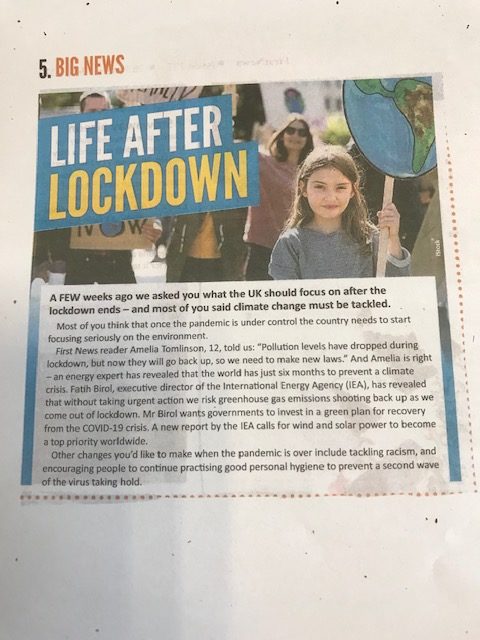
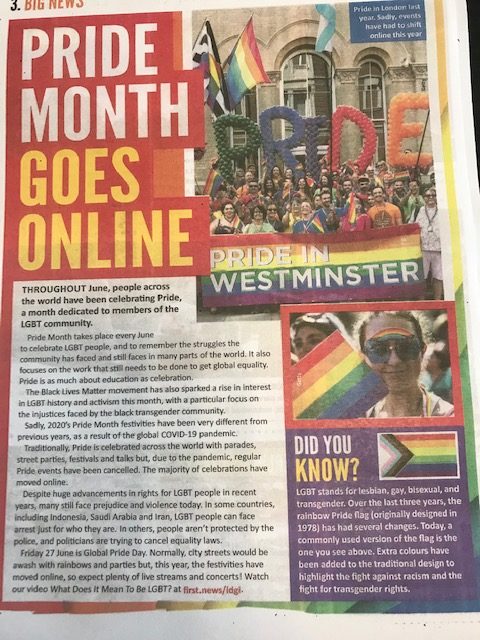
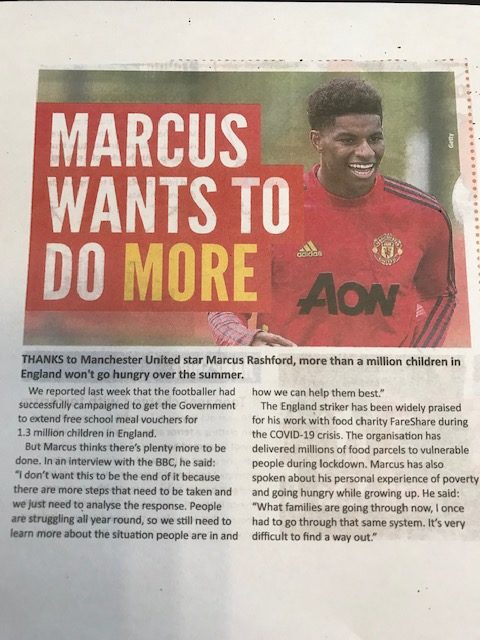
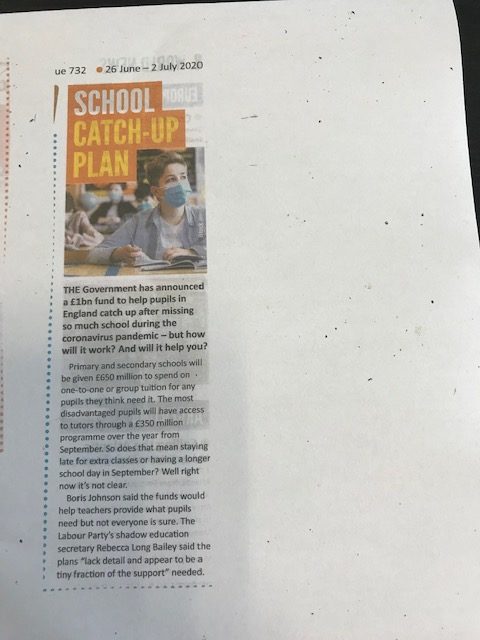
Lesson 3 + 4 – Write and edit your news report
Using the Year 6 expectations, and your planning sheet, write your newspaper article draft. Once complete, think about how you would like the final draft to be (what pictures you will need). Sketch the layout and then put your final piece together.
Science
What impact are humans likely to have on life in the future?

In today’s lesson, we will learn about some of the impacts that humans have on life on this planet. We will look at pollution, global warming, hunting and deforestation. We will learn what happened to the dodo bird and about some amazing organisations that are working hard to ensure that other species do not become extinct.
Click here to watch the lesson.
Geography
Why does population change?

In this lesson, we will examine how population has changed over time, how birth rates and death rates affect populaton, and how the population of the UK has changed.
Click here to watch the lesson.
History
Did you know that it was the NHS’ birthday on 5th July? To celebrate this occasion our History lessons this week will focus on the creation of the NHS and how it helped to rebuild Britain.

[dropshadowbox align=”none” effect=”lifted-both” width=”auto” height=”” background_color=”#ffffff” border_width=”5″ border_color=”#3a95f7″ ]This year has been the most challenging in NHS history, with staff displaying extraordinary dedication, skill and compassion to care for the 100,000 patients with COVID-19 who needed specialist hospital treatment and many others besides. During this testing time our nurses, doctors, physios, pharmacists and countless more colleagues were sustained by the support of the public, not least through the weekly applause for key workers. No health service, not even the NHS, could have coped alone with this coronavirus pandemic. From bus drivers and teachers to care staff and food retailers and, of course, the public who took action to stay at home to stop infection spreading, everyone played their part. The NHS’s birthday this year not only offers the opportunity for us to say thank you to the nation, but for us all to come together … to pause and recognise all the work which has taken place in the last months and say a heartfelt thank you.
Sir Simon Stevens, NHS Chief Executive[/dropshadowbox]
RE/Art

We will continue to plan a piece of art work linked to the theme “inspiring” for entry into the Spirited Arts competition.
https://www.natre.org.uk/about-natre/projects/spirited-arts/spirited-arts-2020/
This week children should do an initial pencil sketch of their idea. They should annotate their work showing what colours and materials they will use in their final piece.
PSHE
Please complete the activity sheets about the dangers of alcohol and the effects that it can have on the human body.
Reading comprehension
SPAG
Year-5-6-Spelling-List-Crossword-Initial-Sound-Followed-by-Double-Consonant
year-6-summer-term-2-spag-activity-mats-1
year-6-summer-term-2-spag-activity-mats-2
English


This week, we have teamed up with The Guardian and Newswise’s new project from promoting the teaching of news in schools. It is called The Happy News Project. It has a focus on wellbeing with uplifting stories, and developing teamwork, speaking and listening and news writing and reading skills.
How it works (from their website):
Organise your pupils into editorial news teams and set them the challenge of researching and reporting a happy news story to share with others.
Working in teams: organise pupils into teams so they have the opportunity to work together to research and produce their final report. Use the suggested roles below to give pupils additional responsibilities:
- Desk Editor: acts as team leader and makes the final decisions, including which story to report.
- Reporter: researches key witnesses for the story and/or conducts interviews.
- Subeditor: proofreads the report, checking for grammar, spelling and punctuation errors – as well as checking the facts! Subeditors also write the headline.
- Picture Editor: selects the most interesting and appropriate pictures to use in the report. They can also write the captions.
Create a real audience: decide who your audience is and how your pupils can share their happy news stories with them. Could it feature on the school website or newsletter? Could you create a printed version to share with families? Remember, it’s all about spreading happy news to others!
_____________
Begin the project with a focus on wellbeing – see our PSHE
lesson on managing feelings to explore how news can affect emotions and different
strategies for managing wellbeing – of course, focusing on happy news is one of
them.
Try out the different roles in a newsroom in our lesson on
how news is produced. Pupils can have a go at different roles from reporter to
subeditor, and practise the skills needed ahead of producing their own reports.
Explore how journalists choose which news stories to report
in our newsworthy news lesson, preparing pupils for selecting their own news
stories.
Day 4 – Find a story:
Allow time for pupils to research possible happy news stories to
report, remembering what makes a newsworthy story. Once teams have decided on
one, hold a news conference where they share their chosen story with the rest of the
newsroom, justifying how it will help to spread joy and why it is newsworthy for
their audience.
Maths
This week’s learning:
Lesson 1 – Solve two-step equations 2019
Lesson 2 – Find pairs of values (2) 2019
Lesson 3 – Convert metric measures 2019
Lesson 4 – Miles and kilometres 2019
Last week’s answers:
Lesson 1 Answers – Area and perimeter
Lesson 2 Answers – Area of a triangle (3)
Lesson 3 Answers – Area of a parallelogram
Lesson 4 Answers – Volume of a cuboid
Science
What impact have humans had on plants and animals?
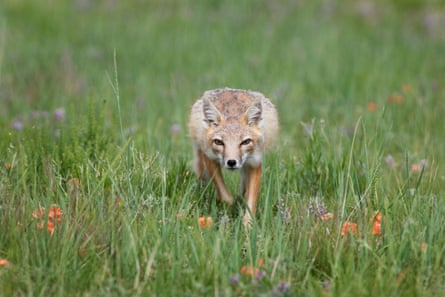
In this lesson, we will look at how humans have changed over time and use the theory of evolution to explain these changes. Learning how to make and use tools, shelter, fire and language has enabled humans to spread all over the world. We will start to look at the impact that humans have had on some species of plants and animals.
Reading

Read last week’s copy of First News. Once complete, tell us on Dojo what your favourite article was and why…
Click here for last week’s copy.
Geography
Where are all the people?
![]()
In this lesson, we will be starting a new topic all about population! We will consider how many people there are on the planet, how this has changed, and where populations are distributed.
PSHE
This week, we will be exploring the dangers of smoking. Have a look at the PowerPoint and complete the activities.
Dangers of smoking Powerpoint resources
Art
Please follow Mrs Glenn’s lesson plan on ‘The Fauves’.
All about the Fauves – PowerPoint
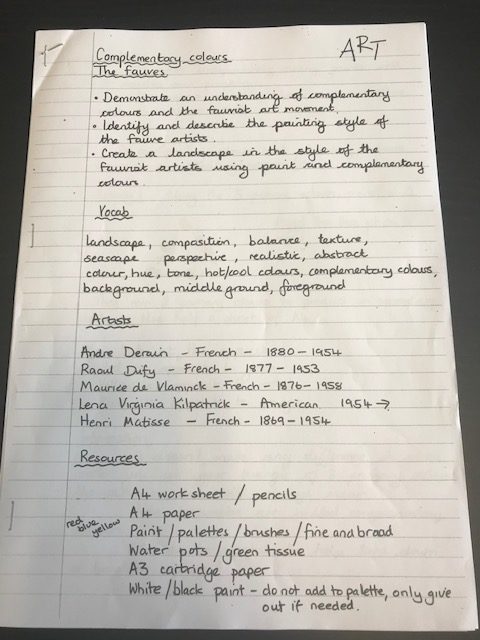
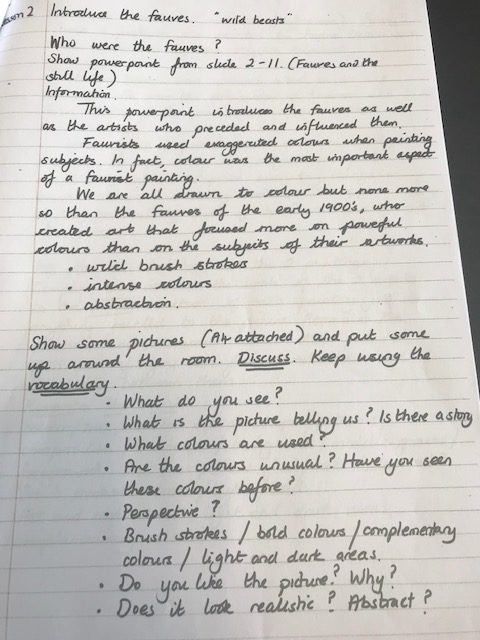
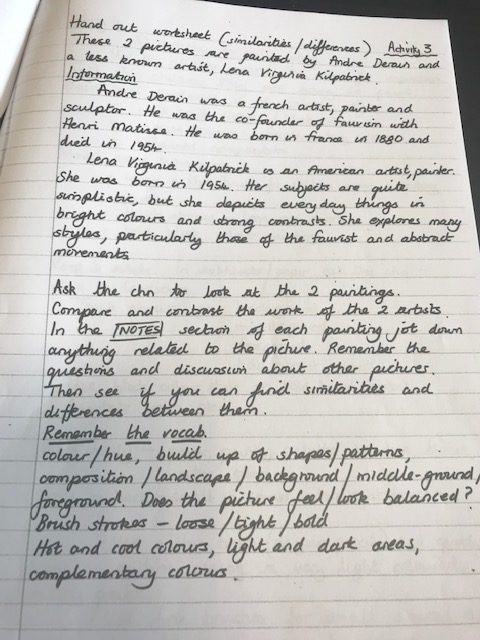
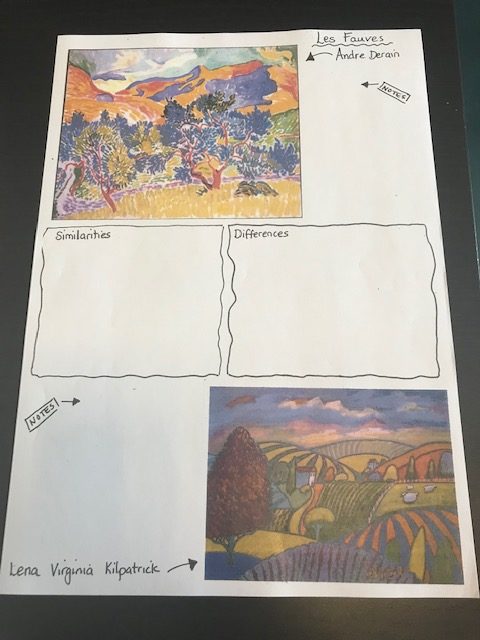
Examples:
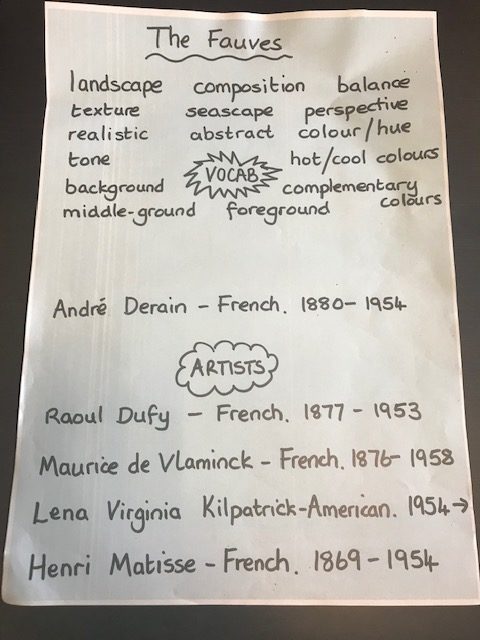






RE
The National Association of Teachers of RE are running their annual Spirited Arts Competition. Full details of the competition can be found at the link below.
https://www.natre.org.uk/about-natre/projects/spirited-arts/spirited-arts-2020/
Over the next three weeks children in year 6 will plan a piece of artwork around the theme “inspiring”.
The video clip below explains a little more about this theme. The video is long but you only need to watch the part from 12:04 to 21:12 to see examples of work connected with this theme.
Think about a person, place or quotation you would like to focus on. It can be linked to a religion but it doesn’t need to be. The attached PowerPoint may give you some ideas.
Use the planning grid to plan out your artwork.
If you are still working from home, please do make sure that you are sending us your work on Class Dojo. We love hearing from you so please stay in contact regularly.
English
This week, our English is going to be based on our Geography topic of The Lake District. We are going to be creating a travel guide for those wishing to visit.

Day 1 – L.O. I can identify WMG travel guide.
Read examples and identify common features. Create a mind map of WMG travel guide. Split the features into structural and grammatical.
Example 2 – look at the Scarborough, Whitby and Filey features.
Day 2 – L.O. I can research and plan a travel guide using condensed notes.
Think back to our Whitby travel guides. What sections did we think your reader wanted to know more about? Use the template to structure your notes into more of a plan. Fill in the key vocabulary section, once completed. Think about impressive and persuasive vocabulary.
Lesson 2 – Researching and planning
Day 3 – L.O. I can write and edit my travel guide.
Use the plan, and our key features, to write your travel guide. Remember to use the Year 6 expectations.
Day 4 – L.O. I can publish my travel guide.
In neat, create an effective and eye- catching final draft of your travel guide. You may want to do this in poster or leaflet form.
Day 5 – L.O. I can independently write a travel guide.
Using the key features that we have learnt about this week, we would like for you to choose your dream destination and create a travel guide. It could be a place that you have previously visited, or somewhere that you have always wanted to visit. Remember to use the Year 6 expectations throughout your writing.
SPAG
This week, we shall be revisiting modal verbs and looking at persuasive language to help us when we our writing our travel guides to the Lake District.
Persuasive language – Powerpoint
Persuasive language – Worksheet
Geography

This week, we would like for you to create a case study about the Lake District. Watch the documentary below and make notes using the sheet beneath the video.
Case study – The Lake District
Maths
Lesson 2 – Area of a triangle (3)
Lesson 3 – Area of a parallelogram
Answers from last week:
Lesson 1 Answers – Fractions to percentages 2019
Lesson 2 Answers – Equivalent FDP 2019
Lesson 3 Answers – Order FDP 2019
Lesson 4 Answers – Percentage of an amount (2) 2019
Art
This week, we would like for you to have a focus on how and why we use complementary colours. Please have a look at the colour theory below and then create your own monster artwork (as shown below) based on the complementary colours. Remember to sketch it out first! You can use colouring pencils, paints, crayons, chalk or felt tips to create your work. We would love them to be sent to us on Class Dojo! (Why don’t you include your Dojo monster as one of the 4?)

From BBC Bitesize: Complementary colours
Complementary colours sit across from each other on the colour wheel.
These are often referred to as opposite colours and even contrasting colours. Don’t be confused by the three different names, they all mean the same thing.

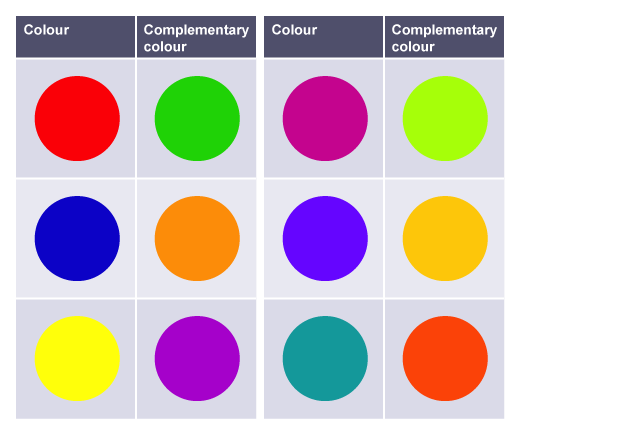
When complementary colours are placed next to each other, a very strong contrast is created. The colours appear more vivid and brighter. Some people say these colours clash when used next to each other and create very visually stimulating artwork. The complementary colours are:
- Green and red
- Orange and blue
- Yellow and purple
- Yellow-green and red-purple
- Yellow-orange and blue-purple
- Red-orange and blue-green
In Van Gogh’s Self portrait (1889), the blue of his shirt matches the background colour.
The blue complements the bright orange of the beard and hair and the greenish colour of Van Gogh’s face.
The painting palette and brushes are similar colours to the artist’s skin. There are patches of orange, green and pink paint on the palette. These make a visual link between the artist and his work that stands out against his surroundings.
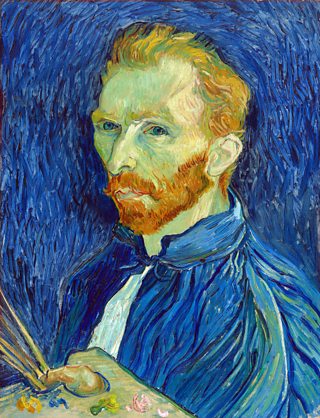
Science
Which organisms lived during each era of time?

In this lesson, we will learn what the fossil record has taught us about the history of organisms that have existed on our planet. We will learn what a geologist is and what they can tell us about the organisms that have lived during each geological era of time. For this lesson you will need a piece of paper, a pencil and a ruler.
History
LO: To investigate and interpret the past.
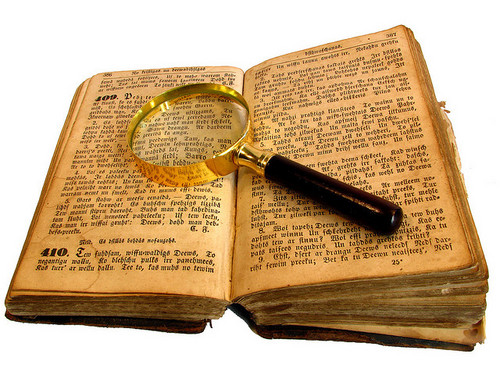
Success Criteria: I can make deductions about artefacts from the Benin Kingdom
Key Question: What can we learn about Benin society from images and artefacts that have survived?
Starter
Run through key vocabulary, then show children image on slide 3, which they first saw in the last lesson. Give each child an image.
Task 1: Play Fastest Finger First – pupils take it in turns in their pairs to find something in the picture that they think tells us a fact about 11th century Benin.
Task 2: Now ask your child to come up with their top 5 deductions from this artist’s illustration. You may like to use the animations on the slide to draw attention to the most significant. The sort of things you might expect them to say might include:
1 Oba’s palace
2 One of the Oba’s important officials
3 A sun-shade for important people
4 The Oba
5 Leopards. These show that the Oba was powerful and strong
6 Rattle stick
7 Blowhorn
8 Villagers watching the procession
Input and Development
Next, ask the question, How did the artist know what to draw? Ask the pupils to think about the sorts of evidence an historian covering this period might use. As a gentle way into this demanding, but important question, ask pupils to consider the wealth of evidence available to historians in the future who might want to study Nigerian society of today. This will get them talking freely. Now return to the original question.
Task 3: Listed on Sources for the Artist sheet are 10 possible sources. Which do they think would have been available to historians studying the 11th century Benin? Ask your child to complete the list but ask the more able to consider which would have been most useful. Rank them 1-5 the most useful being 5. Discuss their ideas using slide 3 to help. Now tie the your child’s thinking on evidence to a more physical image. How did the artist know about each of the features numbered on slide 3?
Slide 5 and 6 helpfully shows some examples: a photograph of a figure blowing a horn; a bronze plaque of an Oba; a model of a leopard. Slide 7 shows a Dutch engraving from the 17th century. Can your child see the ways in which the modern artist has used its detail?
Task 4: Now it is time to play Call my Bluff, the history version. Show your child four mystery objects singly on slides 9, 10, 11, and 12 and then as a composite slide 13. Ask your child to come up with a possible plausible identification and explanation of use for the object that you have chosen. This presents a wonderful opportunity to develop pupils’ persuasive sentences. Pupils will benefit from you having modelled this. Three objects they are given are sufficiently similar to things they might have seen in the world around them today to enable them to make an educated guess.
Image 4 is designed to be more obscure, offering greater challenge to the more able. Ask your child to write their explanation on a sticky note, and collect these in. Discretely, add the REAL explanation to the pile for each object.
For each image, read out all the suggested explanations, including the correct one. You can then use slides 16-20 to give an explanation of each item (horn, altar bell, armlet and rattle staff).
Notes on each object are included in the lesson folder for further information.
Task 5: Ask your child to draw a museum exhibit showcasing these four objects, writing a quality caption underneath, using the stem phrase. This object is… It comes from (place and time). You can see the detail such as…It tells us that…
NB: Sketching the objects may seem like a redundant task when you could print out the images, but it’s actually an excellent activity during object work since it requires the children to look much more closely at each artefact, observing the details which are going to give them the clues they need to make deductions.
Plenary
Which object do you think is the most interesting?
Which object tells you the most about the Benin Empire?
Resources
Week 3 – learning from artefacts – powerpoint
PSHE
Friendships – establishing and maintaining

Using the sheet below, list was qualities you look for when making friends. Then narrow it down to what your most important qualities are:
Please read the scenario and then answer the question cards:
_________________
Windrush Day

Did you know that the 22nd June is known as Windrush Day? Find out more here.
What is the Windrush Generation? Check out this newsround link to find out more.
Task: Create a poster and/or leaflet about the information you have learnt about the Windrush Generation from the links above.
RE
Welcome to Virtual Sports Week

As this week is Virtual Sports Week, we have decided to theme our learning (where possible) around sports. For links to the activities (and video tutorials), please click here (https://www.howard.croydon.sch.uk/classrooms/virtual-sports-week-2020/) .
We have put together videos of Mr Sinclair showing how to do each activity, and there is a pdf document also explaining the activities and different scores to aim to get etc. which are on the Virtual Sports Week blog page.
There are 10 activities, children are to chose 5 activities out of the 10 activities and put these into the tracker (or they can create their own tracker) which is attached (pdf and word).
Sports-week-activity-tracker.docx-1
Sports-week-activity-tracker.docx-1 (PDF)
For each activity, the children have 60 seconds to complete as many reps of the activity as they can. The aim of the week is to beat their personal best, so we would like to see an improvement on their tracking sheet throughout the week. The PDF documents that explain the activities have Bronze, Silver and Gold targets for them to get. So there is also a section on the tracking sheet for them to tick if they achieve the Bronze, Silver and Gold. The tracking sheet also includes extra daily challenges for them to complete – they can chose which one they want to do each day – on Thursday there is an opportunity to dress up as their favourite character whilst practising.
[dropshadowbox align=”none” effect=”lifted-both” width=”auto” height=”” background_color=”#25f58c” border_width=”5″ border_color=”#0a0a0a” ]Please take pictures throughout the week and send them to us at howardprimaryyear6@gmail.com to help Miss Wheeler create a closing ceremony filled with photos of you all taking part. [/dropshadowbox]
English
This week, we shall be focusing on biographies. We have been lucky to welcome Donna Fraser as one of our new school governors this year, so we thought it would be an excellent idea to get to know more about this sporting icon within our school community.

Day 1 – What makes a good biography?
Go through the PDF slides and evaluate the existing biography. Mind map what you think the key features of a biography may be. Annotate the biography example on the slides below.
Day 2 – L.O. I can use condensed notes to plan a biography.
Using the research provided, write some useful, condensed notes. Don’t copy out whole passages! You may want to create a time line of Donna Fraser’s life and plot key events.
You may want to use the headings: Early life and childhood, Career, Achievements…
Day 3 – L.O. I can write a biography.
Using the key features, start to write your biography. Remember to use the Year 6 expectations.
Day 4 – L.O. – I can write and edit a biography.
Finish writing your biography and edit using the Year 6 expectations. You may even want to write it up in neat.
Day 5 – Independent biography of a sporting icon of your choice.
Choose a sporting legend and create your own biography using the Year 6 expectations. Send it to us on Class Dojo!
Maths
Lesson-1-Fractions-to-percentages-2019
Lesson-4-Percentage-of-an-amount-2-2019
SPAG
Revise how to use relative clauses.
Science

Lesson 3 – What are the different animal kingdoms?
Art
Follow Mrs Glenn’s art lesson instructions on relief work!
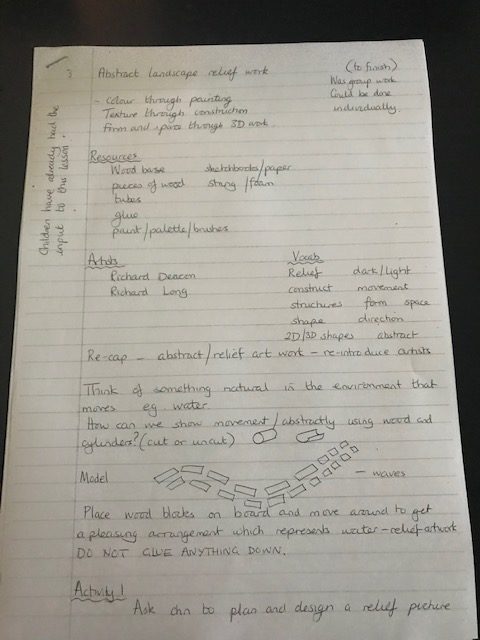
PSHE
This week we shall be look at healthy lifestyles and what makes a balanced diet. Have a look at the powerpoint and design your own balanced meal.
Friday challenge: Have a go at making the meal that you designed.
Movement assembly – Watch here
History
The Story of the Olympic Games
Create a poster or a leaflet which explains the story of the Olympic Games.
RE
Reading Comprehension
Geography
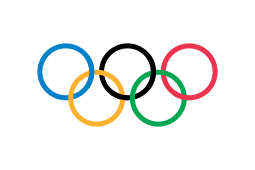
Geography Map Challenge 5 – Olympics host cities
[dropshadowbox align=”none” effect=”lifted-both” width=”auto” height=”” background_color=”#48d7fa” border_width=”5″ border_color=”#080707″ ]If you haven’t done so already, please make sure that you are signed up to Class Dojo. We have received lots of your lovely work over the past few weeks and we love hearing what you have been up to. We will also be posting throughout the school week of some of the lovely learning that is happening in school. Despite the changes and arrangements, it has been a good first week back for some of our Year 6s and we have very much enjoyed seeing some of you again.
From Miss Blackford and Miss Handley[/dropshadowbox]
Maths
English
Day 1 – Using the 5 senses to build descriptive vocabulary.
Imagining that you are the dancer, fill in the 5 senses sheet for what she experiences in the clip. Use a code to indicate whether it was set before (b) or after (a) she left the clock tower.
Day 1 sheet – English – Day 1
Day 2 – Use figurative language to describe a setting.
Use figurative language to compare the two scenes. Remember to use ambitious vocabulary when describing the images.
Day 2 sheet – English – Day 2
Day 3 – Planning a diary entry
Have a read of some good diary examples and mind map what makes a good diary entry.
Then, use the planning template to note down your ideas to write a diary entry as the clockwork tower dancer. Remember to use bullet points for your condensed notes. Use the word bank to list any appropriate pieces of ambitious vocabulary, including examples of figurative language.
Day 3 sheet – English – Day 3
Day 4 – Writing and editing a diary entry
Use the Year 6 expectations to help you write and up level your diary entry. Remember to include the key features of a diary.
Science
How do fossils provide evidence for evolution?
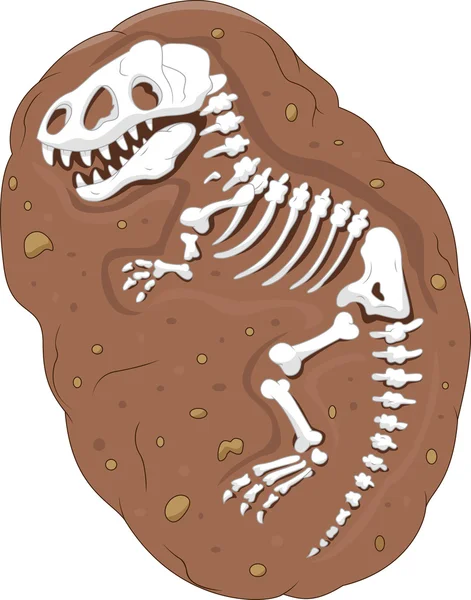
In this lesson, we are going to learn how fossils are formed and how they provide evidence for the theory of evolution. We will learn what the fossil record is and why there are parts missing from the record.
SPAG
Figurative language is when words and ideas are used to create mental images and give impressions. When we use figurative language in our poetry it gives our ideas strength and helps the reader to understand what we mean.
Figurative language worksheet with answers
Reading

Reading comprehension – Martin Luther King Jr
Choose which ability that you feel comfortable with. The one star questions are simpler and work their way up to the three star questions. Answers are included in the document.
PSHE
Why are there huge protests in the US and around the rest of the world at the moment?
Check out this Newsround article.
We have decided this week to revisit Martin Luther King’s famous ‘I have a dream’ speech. Go through the powerpoint and send us your poems on Class Dojo.
Art

We shall be looking at The Colour Theory this week. Read the attached powerpoint and then have a go at creating your own colour wheel using red, blue and yellow paint.
Art – Colour Theory powerpoint
Geography
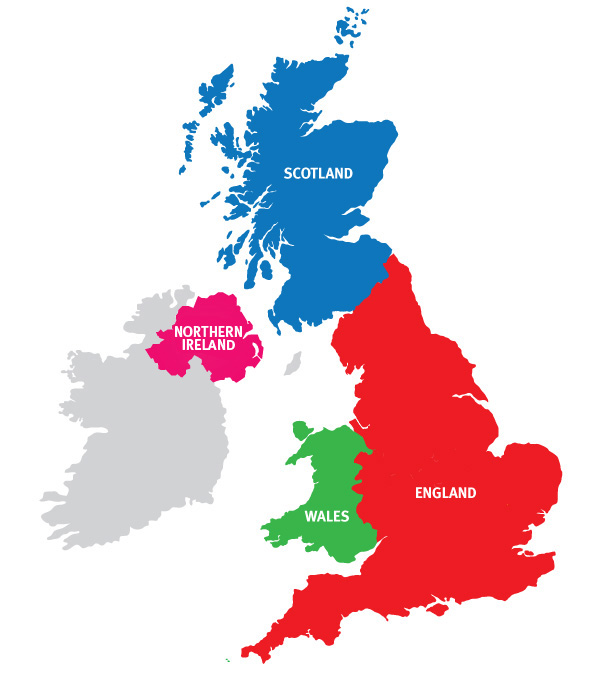
History
LO: To build an overview of world history.
Success criteria:
I can order and list events in African history
I can explain why it is important to study the Benin Kingdom
Key Question: Why should we study the Benin Kingdom?
Read the powerpoint and complete the tasks below:
Task 1: Cut up the events and put them in chronological order.
Task 2: Place the events in a Diamond 9 formation according to which is the most important event for Africa and its people and which is least important. Ask them to explain their choices.
For Task 3, without telling your child what they depict, what can they deduce themselves about the Benin Kingdom from these images? Talk through their ideas and share what the paintings are, using slides 6, 7 and 8.
On paper, write a Tweet to complete the statement: I think we should study Benin in our school because… This is a good exercise since it forces children to be concise and think carefully about their word choices. They will only have 280 characters, they must include their key reason and hashtags of key words.
Send us your tweets on Class Dojo!
Events in Africa’s History with diamond 9
RE
[dropshadowbox align=”none” effect=”lifted-both” width=”auto” height=”” background_color=”#c278f2″ border_width=”5″ border_color=”#131111″ ]We hope that you all had a fantastic and relaxing half term! Just a quick reminder that Monday is an INSET day. We would really like for you to keep sending us your work on Class Dojo. Please make sure, if you haven’t done so already, that you are keeping up to date with the Fiction Express reading – just let us know if you need your login details again. [/dropshadowbox]
English
The Lighthouse
Day 1 – Create a story map of the key events from ‘The Lighthouse’.
Using adverbials of time and arrows linking to each image, recount the key events of the clip. After, list what you think what could be some key vocabulary relating to this topic. Remember to use ambitious vocabulary, figurative language, expanded noun phrases or even some powerful verbs. Most importantly, make sure that you have checked the spellings by using a dictionary (if you don’t have one at home, you can use one online).
Day 2 – Hotseating activity as the Lighthouse Keeper.
What sorts of questions would you like to ask him? Record your questions on a table with two columns:
Remember that open questions always require a longer answer.
After writing at least 5 questions for each, either with a parent or by yourself, answer the questions as the Lighthouse Keeper.
Day 3 – Planning a newspaper report
Use the examples to refresh your memory back to our unit on newspaper reports we completed earlier in the year…
Day 4 – L.O. I can write and edit a newspaper report.
Using your planning sheet and the resources below, write your newspaper report. Once finished, check against the key features to see if you can up-level any further.
[dropshadowbox align=”none” effect=”lifted-both” width=”auto” height=”” background_color=”#56fcb8″ border_width=”5″ border_color=”#131010″ ]We would like you to send all newspaper reports to our Class Dojo account or by emailing them to howardprimaryyear6@gmail.com. [/dropshadowbox]
SPAG
Formal or informal language
Spelling Frame – words ending in -cious and -tious
We shall be looking at how you get on with the revision of these endings. Please let us know if you need your login details again.
Passive and active voice
Active and passive voice activity
Reading
Read the text and answer the questions. Send the answers to us on Class Dojo!
History
L.O. To develop chronological understanding about Benin

Key Question – When was the Benin Kingdom in power?
Starter –
What do you know already about Benin?
What would you like to know about Benin?
Mind map these two questions in your book/paper. Share and group types of questions, e.g. life questions, geography questions, leadership qus etc.
Talk through the info slides that set Benin in context of time and place. One map shows where the Benin Kingdom was and the other is a modern map of Africa. Point out on the modern map that there is a country called Benin now, but that this was named after the Kingdom and is not in the same place.
Input and development –
Order the periods of history (on the slides) in chronological order.
Parent help – Label the centuries in which the Benin Kingdom was in existence (900 – 1897 AD) with a coloured sticker / symbol so it stands out.
What do the children think they mean?
Ancient Egypt and the Stone Age, although important periods in the primary curriculum, are not featured here since they are before the earliest date on this timeline, 1000BC
The WWII symbols is smaller to indicate comparative scale.
Which periods in history that we have studied ran concurrently? What was the longest period in history of these examples?
In books, write a summary of what you have learnt.
Plenary –
Look at the end date of the Kingdom of Benin. (1897). Why do you think this powerful, long lasting Kingdom might have come to an end in 1897?
Spanish
Watch the online lesson and practise your Spanish numbers.

https://www.thenational.academy/year-6/foundation/el-alfabeto-y-los-numeros-year-6-wk1-2
Science
We shall be starting our new topic called Fossils and Animals over Time. Lesson 1 starts off ‘lightly’ by looking at What is the Theory of Evolution?

Maths
Lesson-1-Multiply-and-divide-by-10-100-and-1000
Lesson-2-Multiply-decimals-by-integers-2019
Lesson-3-Divide-decimals-by-integers-2019
Lesson-4-Decimals-as-fractions-2019
Art
This week, we would like for you to collect a few items that have been meaningful to you whilst you have been at home to create a still life piece of art. Think about how you would like to arrange them and you can choose any media (drawing, painting, sculpture) to depict them.
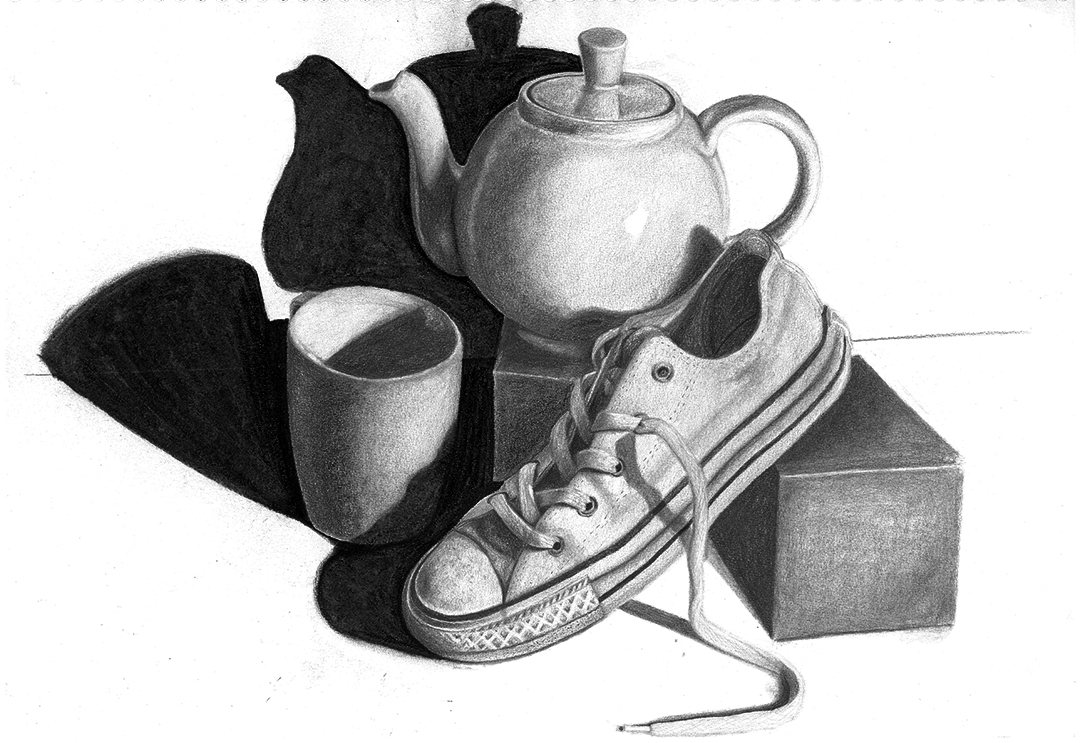
Geography
Geography Map Challenge 3 – Rivers, Mountains and Oceans
Music
All year group pupils from year 1 to year 6 can access the making music online for music activities.
https://www.cma-online.co.uk/making-music
The password is makingmusic123
PE
It is super important that we are still keeping active whilst at home. Please find below a selection of resources for you to choose from:
Password: howardprim
[dropshadowbox align=”none” effect=”curled” width=”auto” height=”” background_color=”#bde2fa” border_width=”2″ border_color=”#7e3b18″ ]Good morning all,[/dropshadowbox]
After some of the Y5s were my guinea pigs, I would like as many children and families as possible from our school to trial something really exciting. This is based on an online tool called “Digimaps for Schools” by the University of Edinburgh.
[dropshadowbox align=”none” effect=”lifted-both” width=”auto” height=”” background_color=”#e1ecb7″ border_width=”2″ border_color=”#185e7e” ]Thank you Damara, Emiliana, Bianca, Lillian and James in Year 5 for giving it a good go.[/dropshadowbox]
Your task is to plan and document a walk you are going to undertake as a daily exercise. The steps I would like you to include are:
-
-
-
-
Go for a walk and take photographs of interesting sights.
-
Back at home, log-on to Digimaps.
-
https://digimapforschools.edina.ac.uk/login
Log-In: CR01DT
Password: dwests0986
-
-
Create a map for the local area you have taken your walk in.
-
Draw in the walk (draw lines in sections or as a whole; double-click for sections).
-
Pin in your home.
-
Measure the distance between the different parts of the walk.
-
After your walk, upload the photos into the right place on your map in Digimaps. (Remember to save.)
-
Save your map in your class-folder on Digimaps under your first name and the date (e.g. Max-17052020)
-
-
-
Here is the video instruction on how it works:
Have fun.
Thank you very much and happy half-term.
Mr Grundey

